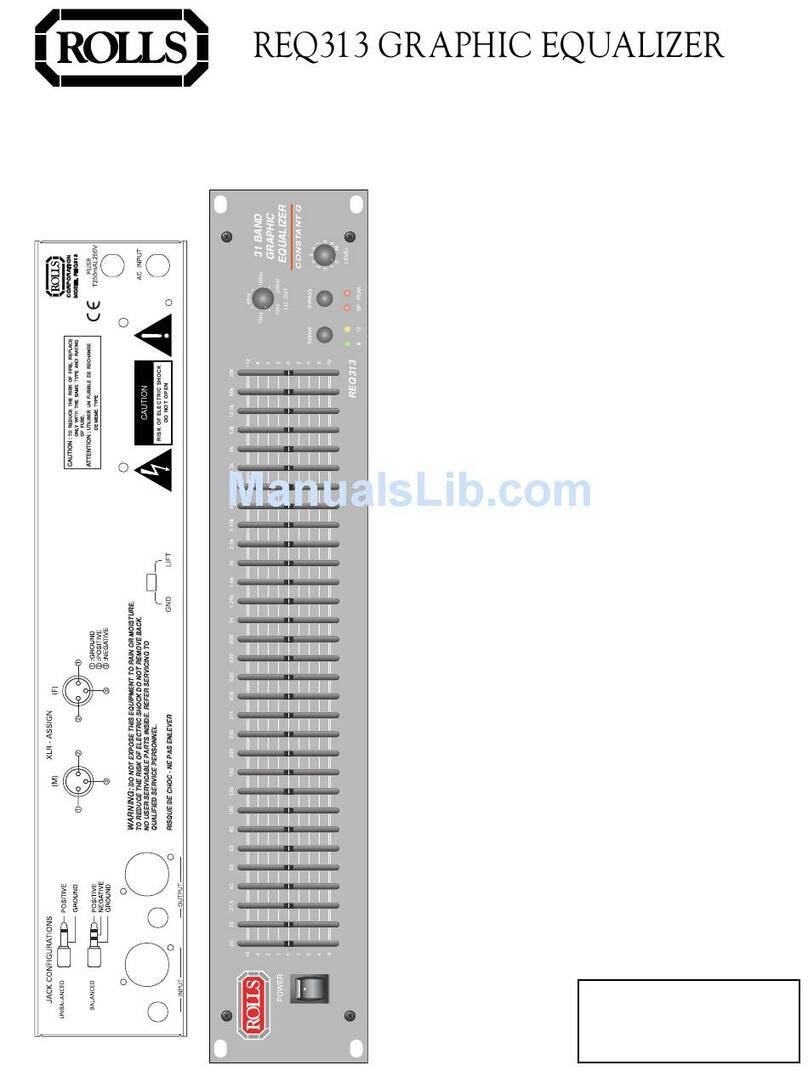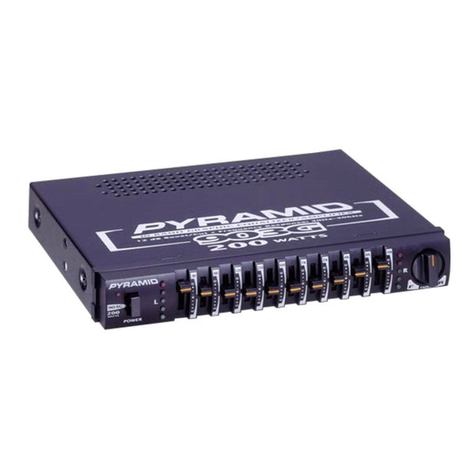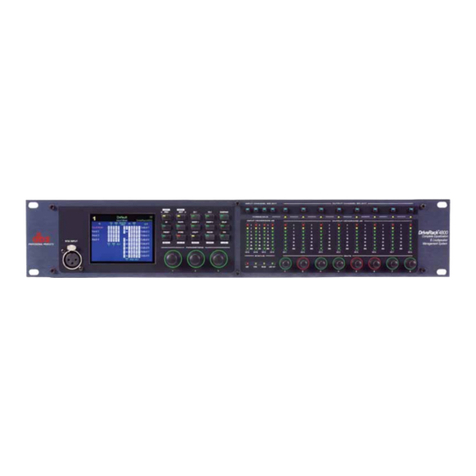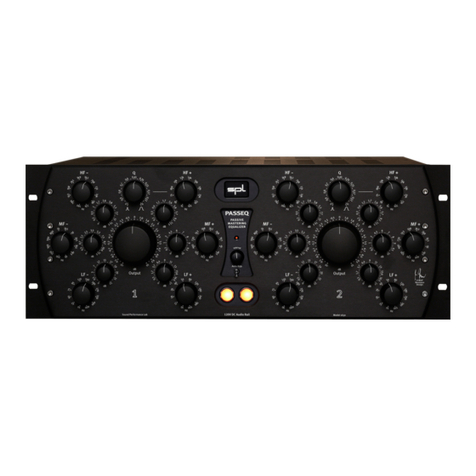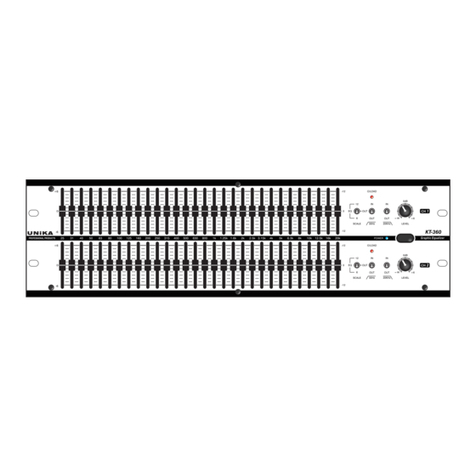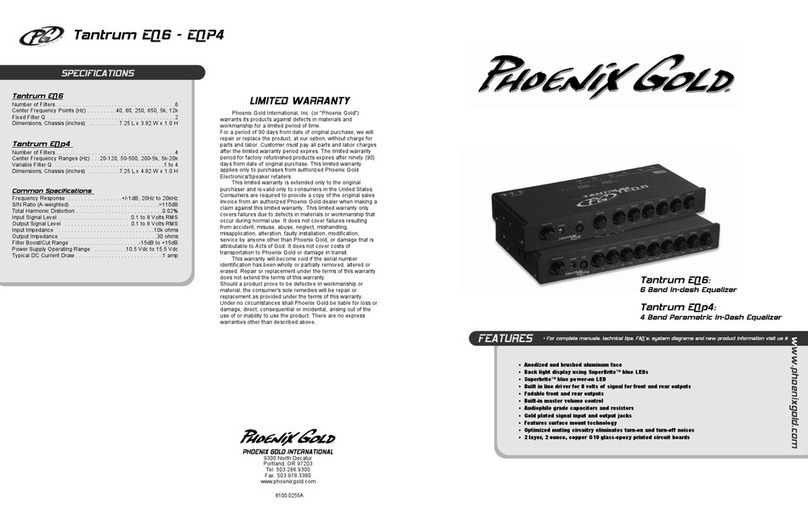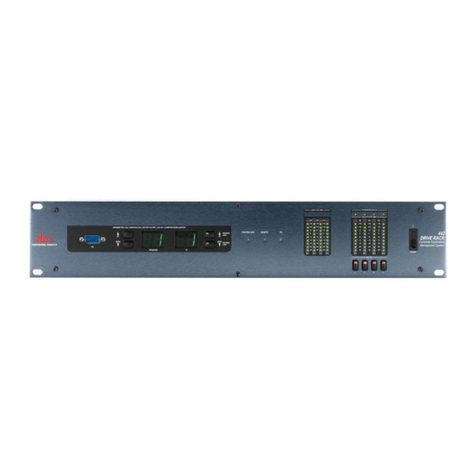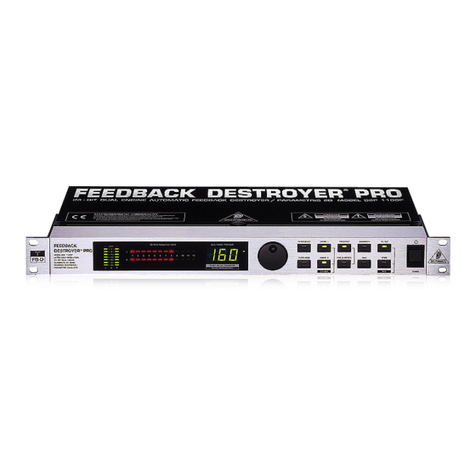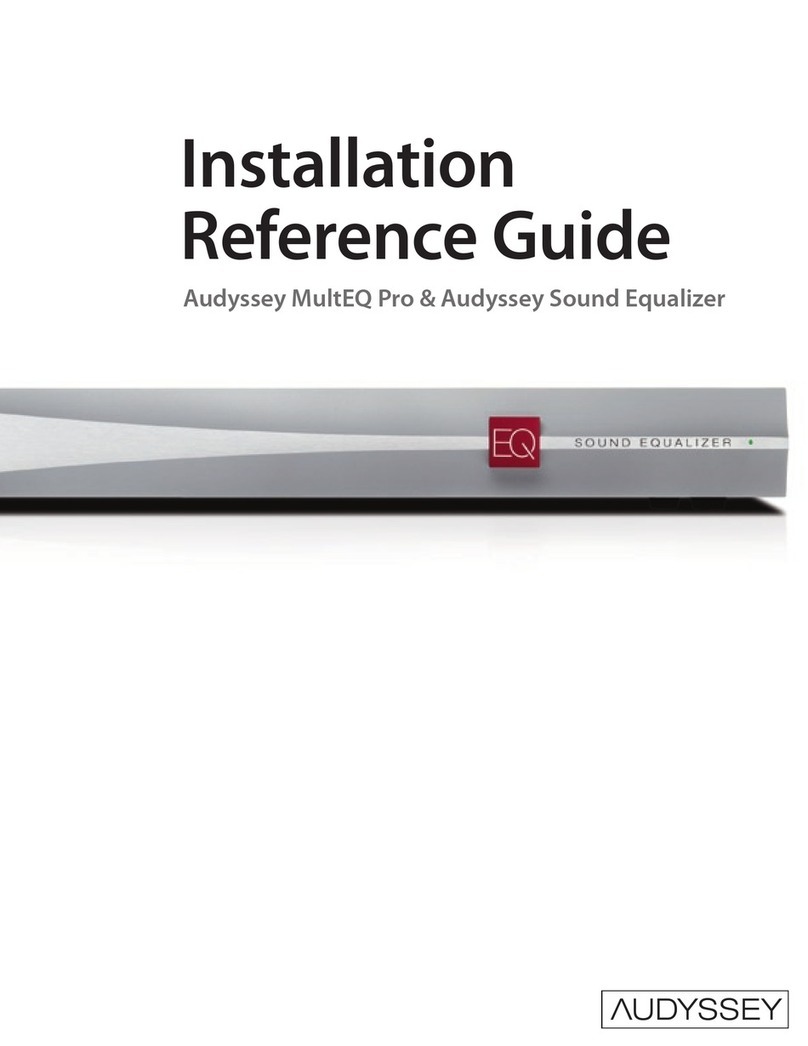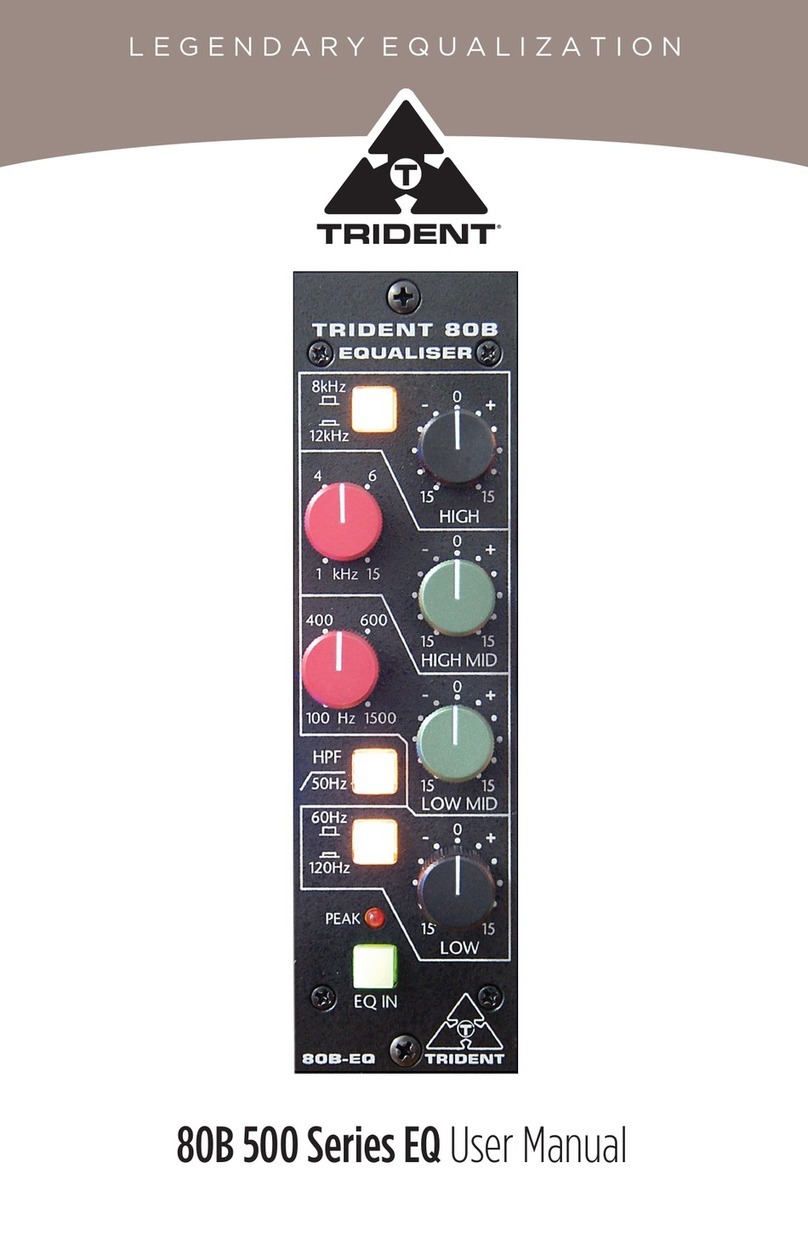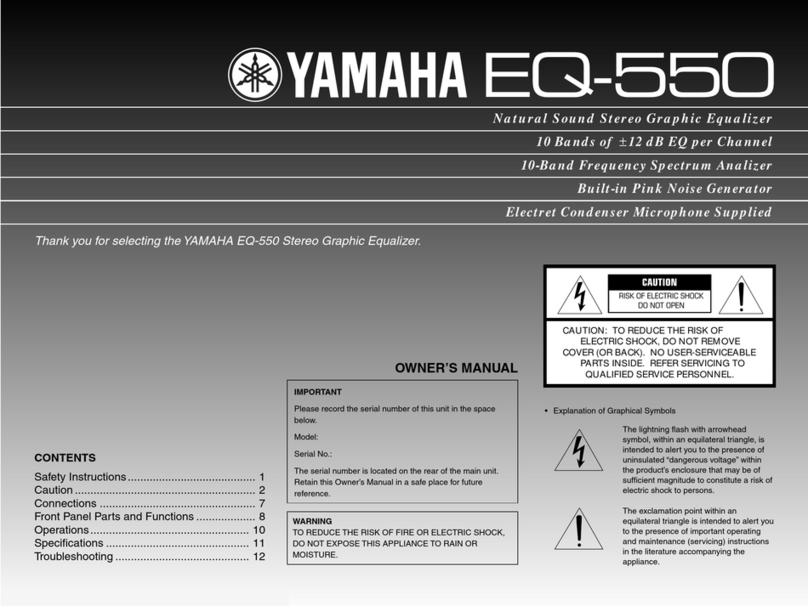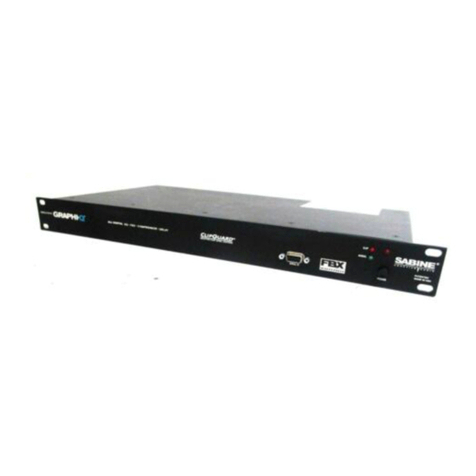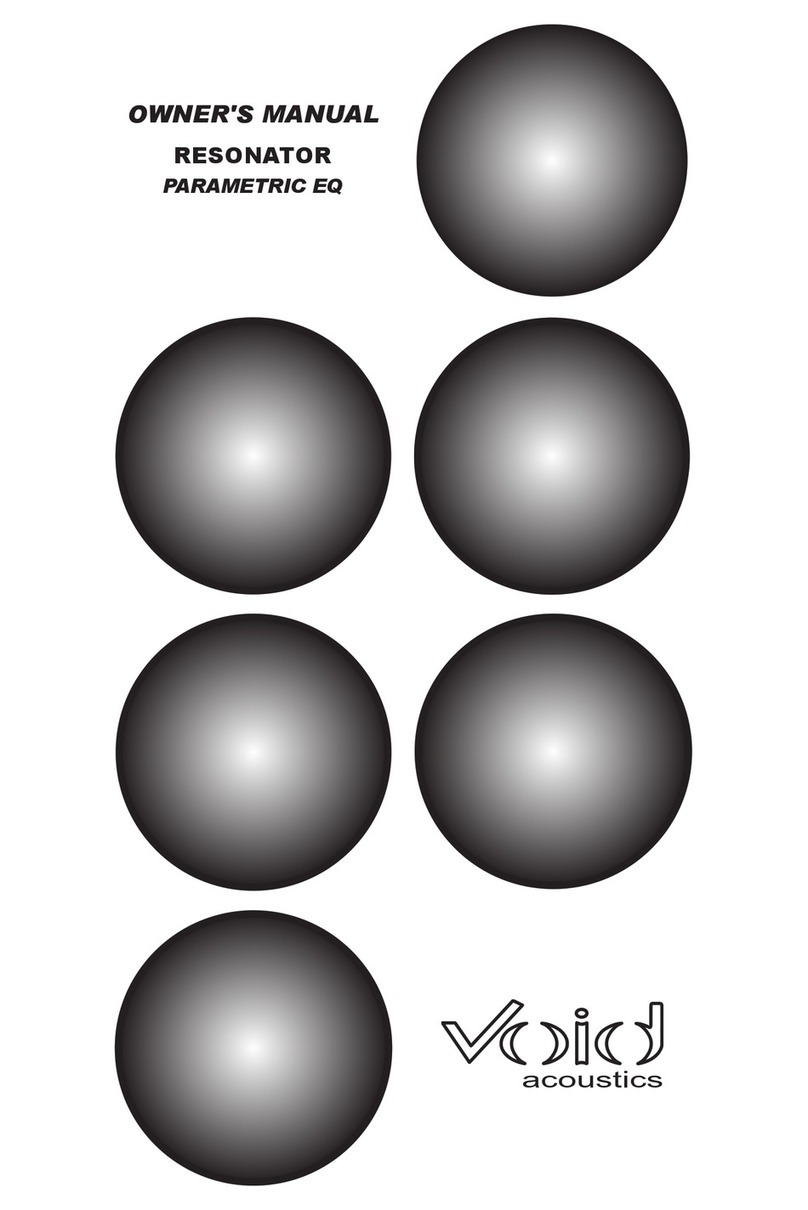Thermionic Culture Kite User manual

CULTURE
THERMIONIC
THE KITE
OPERATING MANUAL
stereo equaliser with attitude

Thermionic Culture Ltd, 2018 1
WARNING
For your personal safety, please read this operating manual
and warning thoroughly before using the equipment.
This unit must be installed in such a manner that operator
access to the mains plug is maintained. Where the product is
to be rack mounted, this may be achieved by having access to
the disconnection device for the whole rack.
To reduce the risk of electric shock, it is essential that the unit
is disconnected from the mains supply before removing the
cover.
Please also note that the power supply capacitors within this
unit can remain charged even after the mains supply has
been disconnected. It is essential that these capacitors are
discharged after the mains supply has been disconnected and
the covers have been removed.
In the event that this unit has been dropped or has suffered an
impact, an electrical safety test must be carried out before
reconnection to the mains supply.
This equipment is not intended for use in explosion hazard
environments. It must be used and stored in studio conditions,
such that the ambient relative humidity does not exceed 80%,
nor is the temperature to be allowed to drop to a level, which
would cause dew point to be reached.
It is not advisable to operate this equipment if all valves are
not in place and working, as voltages will rise and components
may overheat and fail.

Thermionic Culture Ltd, 2018 2
CONTENTS
Section Page
1 Introduction 3
2 Installation 5
3 Controls 6
3.1 Gain 6
3.2 Bypass Switches 6
3.3 Bass Lift 6
3.4 Bass Cut 6
3.5 HPF 6
3.6 Top Shelf 7
3.7 Air 7
3.8 Attitude 7
3.9 Output Trim 7
4 Servicing & Maintenance 8
4.1 Valves 8
4.2 Operating Voltages/Fuse 9
5 Specification 10

Thermionic Culture Ltd, 2018 3
1 Introduction
The Kite has been developed by Thermionic Culture in response
to requests and feedback from many of our customers. Familiar
features include the “Attitude” control and broad, effective EQ in
a 2-channel format.
The sound shaping controls are all dual channel controls,
allowing the user to make fast, intuitive changes to the stereo
mix without having to check alignment between channels.
However, there are independent output level controls should any
adjustment need to be made to the left/right balance.
The “Attitude” design is taken from the Fat Bustard and allows
the Kite to be run as a very low distortion device or to be
progressively made richer in 2nd harmonic content as the
“Attitude” control is increased. We should point out that this
“Attitude” circuit is unique to Thermionic Culture Ltd.
The type of valve used is critical to the success of the sound in
adding useable and desirable harmonic content to the signal
without incurring any noise or headroom issues. It was selected
for several electronic properties that it has and also through
many careful listening tests that proved it simply “sounded right”
when used in the “Attitude” circuit.
The effect of adding 2nd harmonic content to the stereo mix bus
is well known to bring extra dimension and character to the
sound. There is also a subtle squeezing of the dynamic range
due to the saturation of loud peaks and transients in the stereo
signal. This can be very beneficial when used judiciously to
achieve a louder overall mix, rather like the effect of running a
mixing console’s stereo mix bus just to the point of saturation.
However, the valve circuitry will inherently give a larger, more
forgiving range within which to utilise the saturation than any
solid-state console could provide.

Thermionic Culture Ltd, 2018 4
The EQ section of the Kite is also inspired by the Fat Bustard
EQ section but has been developed further.
The “Bass boost” control has 2 frequency positions with
Thermionic Culture’s own “varislope” EQ curves and there is
also a continuously variable shelving “Bass Cut” control. This
gives fine control over the type of bass that can be added and
the interplay between the “Bass Boost” and “Bass Cut” provides
unique shaping possibilities for the low end. For example, the
“Bass Cut” can be used to subtly tighten up the bass end when
applying bass lift or it can be used to provide a simultaneous low
midrange cut and low bass lift, in varying degrees.
A 2-position high pass filter “HPF” control allows further
adjustment to the very low end of the sound.
The “Top Shelf” control is now brought right down into the
midrange with 2 frequency choices, allowing a very broad
musical lift of a wide band of frequencies in the mid to high end
of the spectrum. This can be perceived as an intuitive and
musical approach to stereo EQ as there is no peak or centre
frequency that becomes dominating when EQ lift is applied, just
the smooth addition of presence to the musical content in the
selected range.
For control of the very high end there is a rather special “Air”
control. This is a transparent sounding control that gives
additional openness and sparkle to the sound. It makes the
sound so clear (at Att 1) that there is almost zero phase shift in
the whole audio spectrum when this control is set to 5!
If the user wishes to use a lot of “Attitude” and gain to achieve a
more saturated, dense sound, the “-6dB” switches are there to
ensure the output controls stay within any easy to adjust central
range of the control.

Thermionic Culture Ltd, 2018 5
2 Installation
The Kite should be rack mounted. There are 4 valves in the unit
and they get hot! There is usually no need for a gap to be left
above if the ambient temperature in the rack is reasonably cool,
but it may be prudent to leave a space of 1U in case equipment
above is overheated by the valves. Common sense is needed
and of course we cannot be held responsible for any damage.
DON’T FORGET TO ENSURE THAT THE MAINS SWITCH IS
SET CORRECTLY FOR YOUR AREA BEFORE YOU SWITCH
ON!
If we know the destination for the unit, we will set the switch and
install the correct fuse but it’s best to double-check.
Do not operate The Kite with monitor speakers facing directly
into the back of the unit. We use valves with large electrodes for
their special sound, but they can be a tiny bit microphonic. Also,
their life may be shortened if they are subjected to very loud
noise or vibration.
INPUTS are semi floating with Pin 2 Hot and Pin 3 connected to
Ground (Pin 1) via a small resistor so as not to short out a part
of a balanced signal on pin 3. If coming from an unbalanced
source, then always connect the signal to pin 2 and connect
ground to pins 3 and 1.
OUTPUTS are unbalanced with the signal on pin 2 and 3 & 1
shorted
Standard XLR twin screened cables should be used for both
inputs and outputs. Cable length is not an issue, within reason. If
a balanced output is required, a Balancing Box can be supplied
containing 2 high level Sowter transformers.

Thermionic Culture Ltd, 2018 6
3 Controls
Rotary controls feature matched stereo potentiometers with 21
indents for easy recall, excepting Attitude which is a 6 position
rotary Alpha switch and Output Trims which are mono controls
with 31 indents each.
3.1 Gain
This is self-evident. Can be used with
3.2 Bypass Switches
to achieve unity gain for comparison purposes. Bypass is
exactly what it says and connects inputs direct to outputs
with no electronics involved.
3.3 Bass Lift
This control features our ‘Varislope” design. It’s a shelving
control up to around 6, when the 2 selectable frequencies
(140 & 70 Hz) are lifted by 3dB. As the control is increased
the lower frequencies become more dominate, peaking at
30 & 20 Hz at max.
3.4 Bass Cut
This is a strictly shelving control, the frequencies selected
(1kHz & 400Hz) represent 3dB cut points. NOTE; Using
Bass Lift and Cut together can give a useful mid-range
reduction – see curves.
3.5 HPF
A High Pass Filter with a 12dB/octave slope, being 6dB
down at 20 or 40 Hz

Thermionic Culture Ltd, 2018 7
3.6 Top Shelf
A rather different idea, like a “presence” boost. A flat shelf
with 3dB points at displayed frequencies (1.2kHz & 700Hz).
The high top can be provided by
3.7 Air
This control starts to operate at the very top of the audio
spectrum. When set to 1 or 2 you may hear nothing as it
starts to operate above 20 kHz, but at 3 and above you’ll
hear a natural brightness free from added solid state
hardness. At 10 it’s 5dB up at 10kHz, peaking at 40kHz.
3.8 Attitude
This is a clone from The Fat Bustard and gives exactly the
same musical 2nd harmonic colouration. Ranging from
0.01% to 5% distortion it’s a useful tool to add “character” to
a mix
Frequency response is a bit restricted at high Attitude
settings, so the sound becomes more “valvey”.
3.9 Output Trims
These facilitate very fine control of the output levels, being
2 individual potentiometers with associated – 6dB switches.
These switches are useful if the unit is being driven hard
with a high Attitude setting.

Thermionic Culture Ltd, 2018 8
4 Servicing & Maintenance
The Kite comes with a 12-month warranty covering all parts,
including valves. It is essential that in the event of a fault
occurring, it is returned to our factory, or to the dealer from
which it was purchased for repairs to be carried out, otherwise
the warranty will be invalidated. There is however, one exception
to this rule.
4.1 Valves
It is safe for the user to change the valves, but the unit must
not be operated without all valves plugged in. If a fault
occurs, it may be a valve, so unplug the mains, remove the
top cover, and wait for the valves to cool down a little. DO
NOT touch any part of the circuit board or other
components.
The two Input valves are on the left side of the unit (looking
from the front). The 2 Output valves are a little to the right
of centre.
You can swap the valves from side to side to isolate a fault.
To remove a valve, press the screening can down and twist
anticlockwise, when it will spring out. Then remove the
valve by pulling upwards, possibly using a cloth if it’s still
hot. Take care not to bend the pins when putting back in.
For optimum results, if valves are replaced, replace them in
pairs. DO NOT MIX INPUTS WITH OUTPUTS.
Valve complement:
Input - 2 x 5965/12AV7;
Output - 2 x ECC802S/6189

Thermionic Culture Ltd, 2018 9
4.2 Operating Voltages/Fuse
The Kite can be set to operate from either 230V or 115V
50/60Hz AC. The appropriate voltage can be selected on the red
switch located next to the mains inlet. NOTE: Mains fuses must
be replaced in accordance with the following table: -
Operating Voltage Fuse Rating
115V T630mA 20mm type
230V T315mA 20mm type

Thermionic Culture Ltd, 2018 10
5 Specification
Input impedance 10kΩ
Output impedance 220Ω
Distortion (@ +4dBu) ≤0.015% @ Attitude 1
MOL @ 1% Distortion +25dBu
Noise < -80dBu
Signal/Noise -105dBu
Frequency response
±1dB
Attitude 1: <10Hz to 56kHz
Attitude 3: <10Hz to 20kHz
Attitude 6: 15Hz to 9kHz
Crosstalk (dB) Channel 1: 1kHz -72
10kHz -64
Channel 2: 1kHz -72
10kHz -58
Phase shift Interchannel: 0.25º at 10kHz
Input to Output: 13 º at 10kHz
Power Consumption 39.1W
Net Weight 5.1kg
Dimensions (W)483mm x (H)89mm x
(D)315mm

‐10
‐8
‐6
‐4
‐2
0
2
4
6
8
10
10 100 1000 10000 100000
Gain(dB)
Frequency(Hz)
TheKiteFrequencyResponse
Flat
BassBoost70
BassBoost140
BassCut1k
BassCut400
TopShelf700
TopShelf1k2
BassBoost140+BassCut1k
HPF20
HPF40
Air
BassBoost70+BassCut400

Thermionic Culture Ltd., Harlow, Essex, UK
Tel: +44 (0)1279 414770 email: [email protected]
Thermionic Culture Ltd, 2018. Printed in UK.
Table of contents
Other Thermionic Culture Stereo Equalizer manuals



